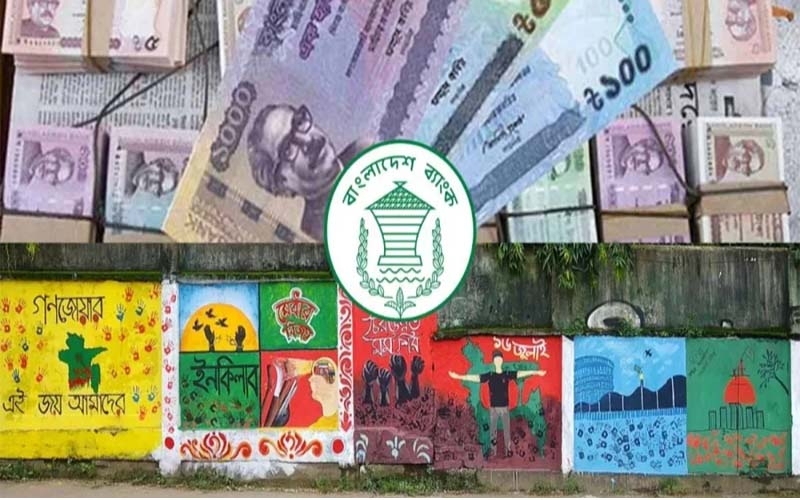- CA Yunus pays homage to Liberation War martyrs on Victory Day |
- Bangladesh capital market extends losing streak for second day |
- Bangladesh celebrates Victory Day Tuesday |
- 'Different govts presented history based on their own ideologies': JU VC |
New Currency Notes Without Mujib’s Image to Launch in April-May

New currency notes featuring a fresh
design and without the image of Bangabandhu Sheikh Mujibur Rahman are expected
to enter circulation by late April or early May, according to Bangladesh Bank
officials. These notes will bear the signature of the current Bangladesh Bank
Governor, Ahsan H. Mansur, marking a shift from the previous design.
Arif Hossain Khan, a spokesperson for the central bank, confirmed that the new design notes will be introduced following the Eid-ul-Fitr celebrations. He explained that the currency notes released for Eid will still feature the image of Bangabandhu Sheikh Mujibur Rahman and the signature of former Bangladesh Bank Governor Abdur Rouf Talukder. The change in design will come once the bank releases notes with the new layout, removing Bangabandhu’s image and replacing the former governor’s signature with that of the current one.
The reason for the delay in printing new design notes, Arif explained, is the significant stock of previously printed currency still held by the central bank. "To prevent wastage, we are not printing new design notes at the moment," he said.
From March 19 to 25, Bangladesh Bank will provide new notes as part of its Eid-ul-Fitr celebrations. The new notes—Tk 5, Tk 20, and Tk 50—will be available through 80 branches of scheduled banks in Dhaka, as well as at central bank offices. However, individuals will only be allowed to collect new notes once during this exchange period. The notes will be available in Dhaka, Savar, Keraniganj, Narayanganj, Munshiganj, and Gazipur, as per a statement from the central bank.
The Security Printing Corporation Bangladesh Limited, also known as Takshal, will continue to print the new currency. Takshal has been responsible for printing banknotes since its establishment in 1976, although it began operations in 1988. Notably, the corporation began printing Tk 1 and Tk 10 notes that year. Currency note designs must be approved by the government, with artists invited to submit designs for approval before the printing process begins. Paper, ink, and printing plates are sourced through international tenders, with plates produced abroad before Takshal proceeds with the printing.
The last instance of currency notes without Bangabandhu’s image occurred in 2009 when some red-colored Tk 500 and Tk 1,000 notes were printed. Despite the years that have passed, some of these notes are still circulating in the market.

